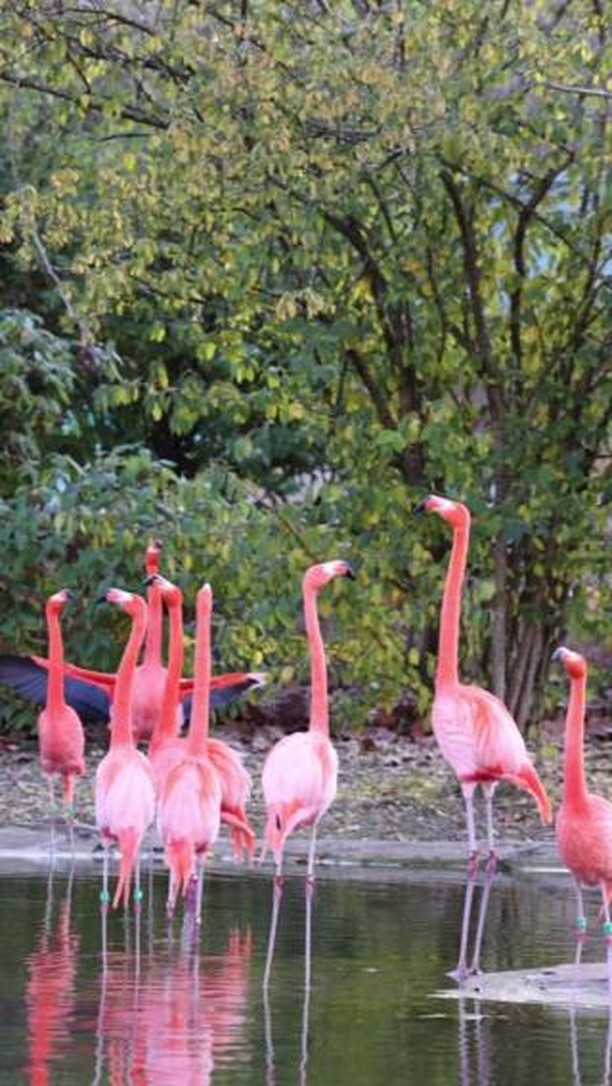- Flamingos exhibit a unique courtship behavior known as “head flagging,” where they turn their heads back and forth, communicating interest and compatibility with potential mates.
- The social dynamics of flamingos play a crucial role in their courtship rituals, influencing mate selection and strengthening group cohesion within their flocks.
- Understanding the biology of flamingos, including their distinct pink coloration and specialized feeding habits, highlights their ecological importance and adaptations.
- Conservation efforts for flamingos are essential in preserving their habitats and maintaining viable populations amidst environmental challenges and human encroachment.
- Interdisciplinary approaches in zoo management and wildlife conservation contribute to the protection and study of flamingo populations both in captivity and in the wild.
Flamingos, our vibrant pink feathered friends, have long captivated the imagination of onlookers and researchers alike. Their striking appearance and behaviors offer a glimpse into the complexities of avian social systems and ecological adaptations. One fascinating aspect of flamingo social life is their courtship ritual known as “head flagging.” This behavior involves a rhythmic turning of the head back and forth, an intricate performance designed to communicate readiness and compatibility with potential mates. Through this dance, flamingos express interest and create pair bonds essential for breeding success.
Flamingos reside in large groups or colonies, often numbering in the thousands. The social dynamics within these dense flocks are integral to their courtship activities. The presence of many individuals during mating displays reduces predation risks and enhances the likelihood of successful mate selection. In such settings, the head-flagging behavior serves not only as a mating ritual but also as a mechanism for social bonding and cohesion within the group. These complex interactions can impact individual fitness and the overall stability of the colony.
Beyond their social behaviors, flamingos possess distinct biological features that make them extraordinary. Their signature pink color is due to carotenoid pigments in their diet, primarily derived from algae, diatoms, and crustaceans. This coloration plays a role in mate selection, as brighter hues are often considered more attractive and indicative of good health. Additionally, flamingos have a specialized beak structure that enables them to filter feed efficiently in shallow waters, a critical adaptation for survival in their often harsh and fluctuating habitats.
However, flamingos face significant conservation challenges. Habitat loss, climate change, and human activities threaten their breeding and feeding grounds. Wetland degradation, for instance, can drastically reduce food availability and nesting sites, posing a direct threat to their populations. Conservation efforts focus on protecting these vital habitats, conducting research to understand flamingo ecology better, and implementing breeding programs to ensure population stability.
In managed environments such as zoos, interdisciplinary approaches in zoo management and wildlife conservation play a pivotal role in flamingo preservation. These settings provide opportunities for controlled study and education, raising awareness about the ecological significance of flamingos and the threats they face. By combining efforts in rehabilitation, habitat restoration, and public engagement, there is potential to make significant strides in flamingo conservation both in captivity and in the wild.
The ongoing study and protection of flamingos are not solely the responsibility of scientists and conservationists. Public awareness and involvement are crucial in supporting conservation initiatives and driving policy changes. Flamingos showcase the intricate ties between species and ecosystems, reminding us of the broader impacts of human action on biodiversity. Through education and collective effort, we can help secure a future for our pink feathered friends, ensuring they continue to grace the skies and wetlands for generations to come.
*****
Source Description
Our pink feathered friends have a lot to say this morning!😌 Flamingos turn their heads back and forth to each other as a part of their courtship display, and this unique behavior is called “head flagging”!🦩


